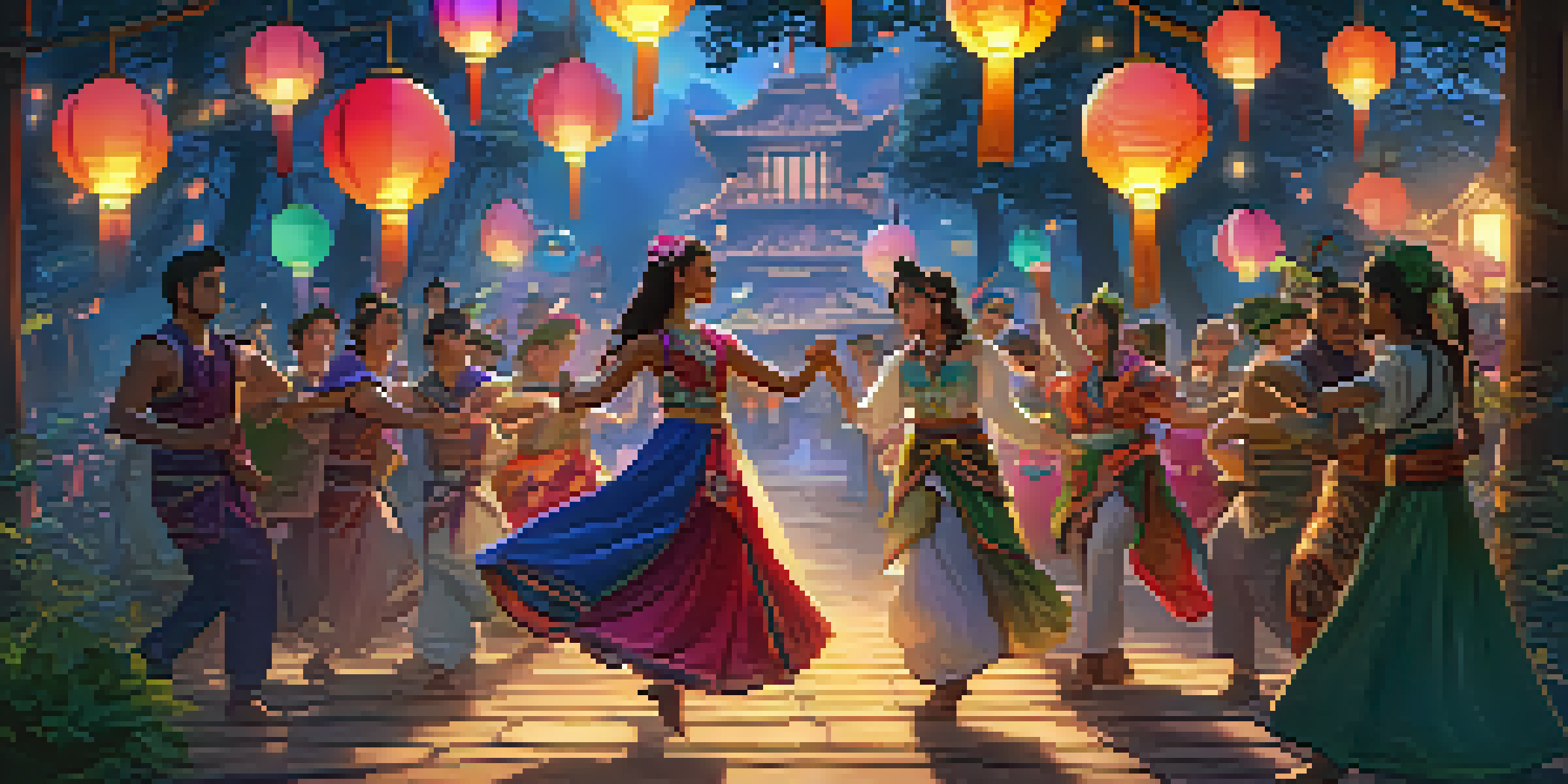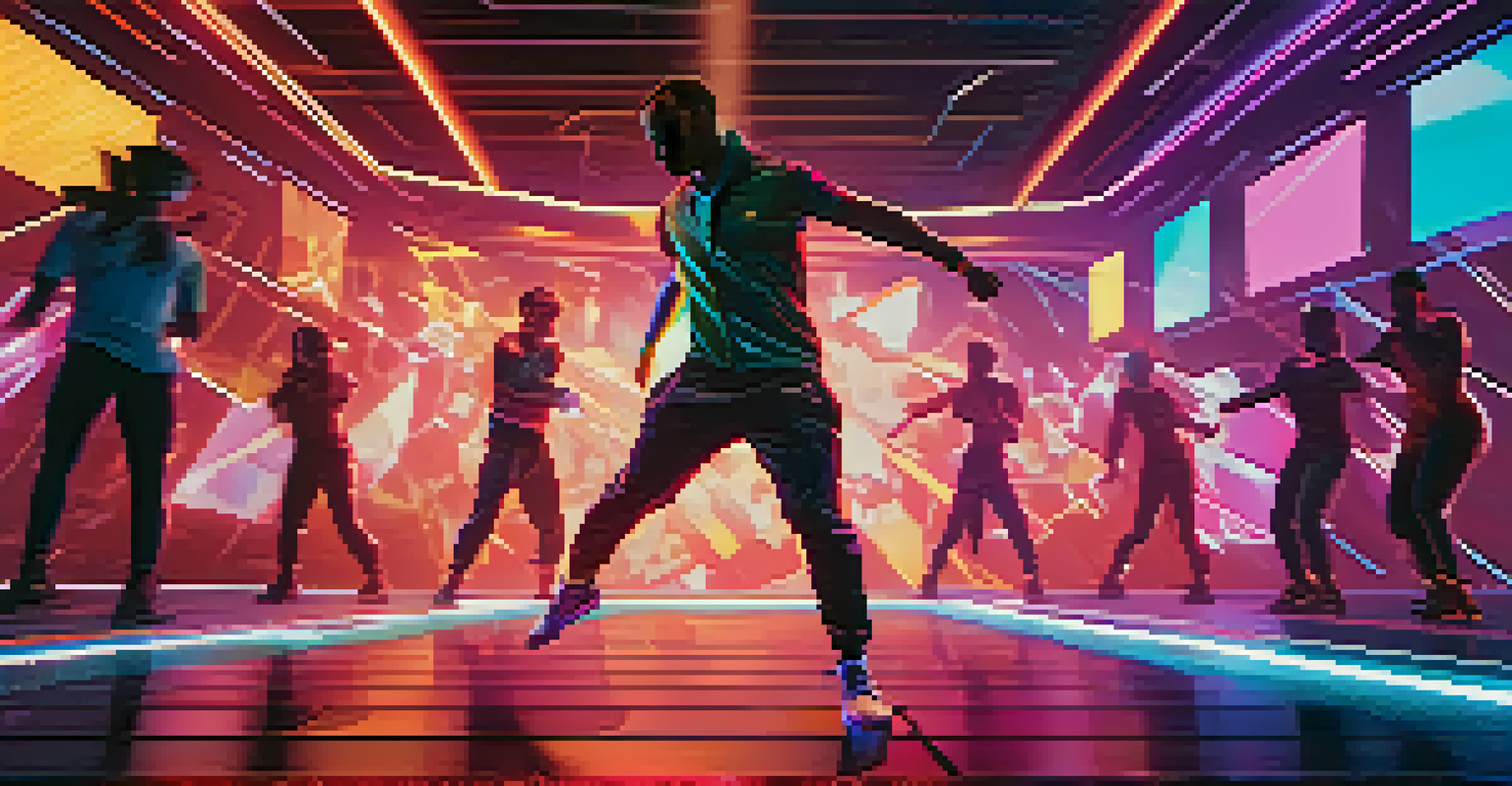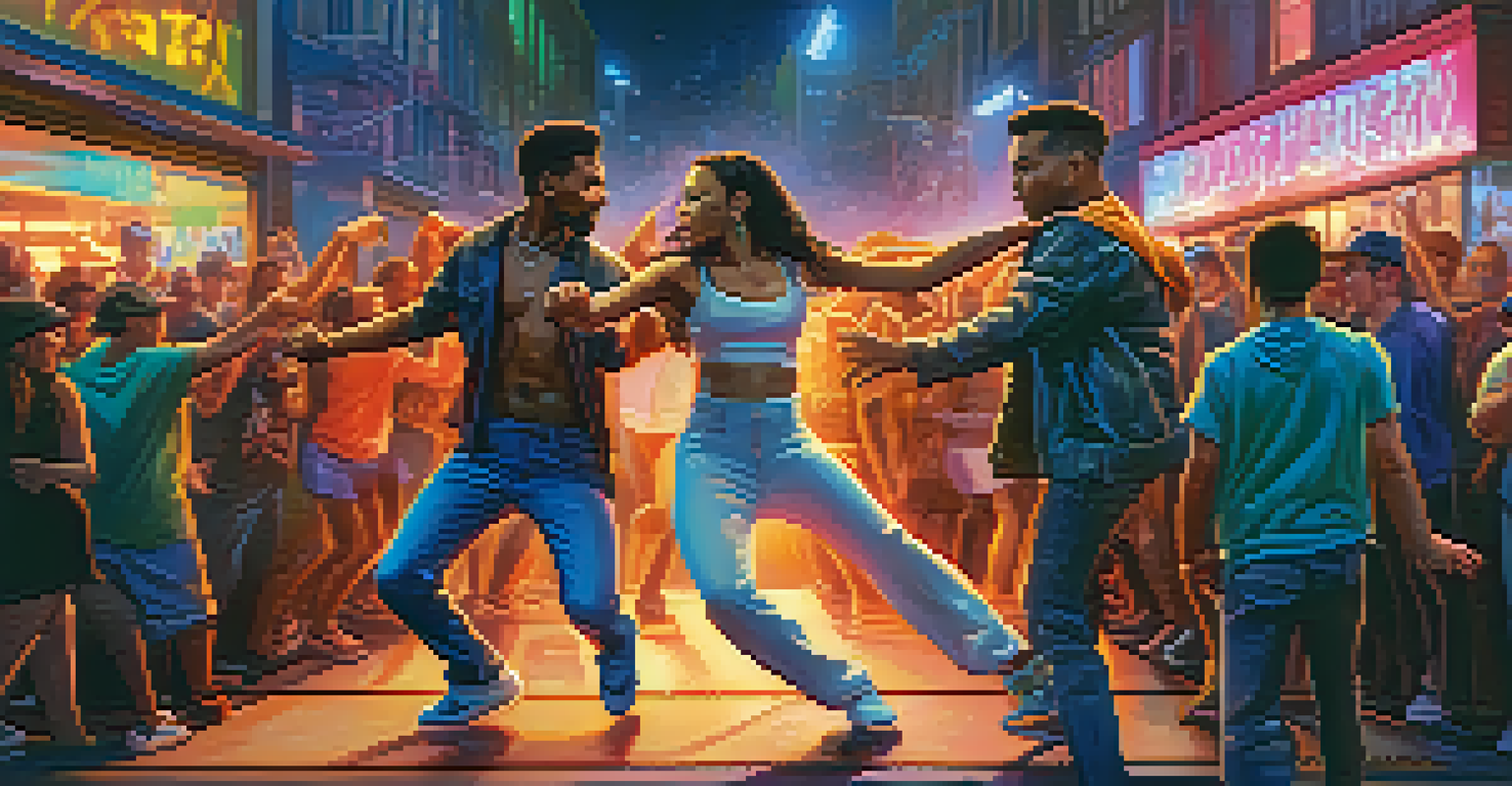Dance as a Narrative Device in Video Games

The Role of Dance in Video Game Storytelling
Dance in video games serves as a compelling narrative device that transcends traditional storytelling methods. It can convey emotions, build character relationships, and even symbolize cultural aspects within the game. Just as a well-timed dance move can evoke feelings in a live performance, so too can choreographed sequences in games leave a lasting impact on players.
Dance is the hidden language of the soul.
Consider games like 'Final Fantasy X,' where the iconic sphere dance not only enhances the storyline but also deepens the connection between characters. The movements reflect their emotions, making the narrative more relatable and immersive. Through dance, players can experience the journey of the characters in a more enriching way.
Moreover, dance can also serve as a tool for world-building, showcasing the cultural nuances of the game's setting. This adds layers to the story, enriching the player's engagement and understanding of the game universe.
Cultural Significance of Dance in Gaming
Dance is often intertwined with cultural expression, making it a powerful narrative tool in video games. By incorporating traditional dances from various cultures, games can educate players while immersing them in the story. This not only enriches the gameplay experience but also fosters appreciation for diverse cultural heritages.

For example, 'Spiritfarer' features dance as a means of connection to the spirits, reflecting their backgrounds and experiences. Each dance tells a story, allowing players to empathize with the characters on a deeper level. Through these movements, players gain insight into the characters' pasts, motivations, and desires.
Dance Enhances Game Narratives
Dance serves as a powerful narrative tool, enriching storytelling by conveying emotions and character relationships.
Additionally, games like 'Just Dance' and 'Dance Dance Revolution' transform the act of dancing into a shared experience, where players can come together to celebrate movement and rhythm. This communal aspect adds another layer, making dance a universal language that connects players from different backgrounds.
Dance as a Form of Character Development
In video games, dance can be a unique way to illustrate character growth and development. Characters may start with awkward movements, symbolizing their struggles, and evolve into graceful dancers, showcasing their journey and personal growth. This transformation can be visually and emotionally powerful, resonating with players.
The dance is a poem of which each movement is a word.
Take 'The Legend of Zelda: Ocarina of Time,' where Link learns various dances that reflect his mastery of skills and abilities. Each dance represents a milestone in his adventure, reinforcing the connection between movement and character progression. As players witness these changes, they feel more invested in the character's story.
Moreover, dance can also reveal hidden aspects of a character’s personality. A character who initially appears stoic may surprise players with unexpected fluidity in their dance, hinting at underlying emotions or desires. This adds depth to the narrative, making the character relatable and engaging.
Emotional Resonance Through Dance Mechanics
Dance mechanics in video games can evoke strong emotional responses from players, enhancing the overall narrative experience. These mechanics often require players to engage physically, creating a connection between the player and the story. When players dance in sync with the game, they become part of the narrative itself.
For instance, in 'Life is Strange,' a dance party scene allows players to experience a moment of joy amidst the surrounding turmoil. This contrast amplifies the emotional weight of the scene, making the dance an integral part of the storytelling. Players feel the highs and lows alongside the characters, deepening their investment in the narrative.
Cultural Representation Through Dance
Incorporating traditional dances allows games to educate players while immersing them in diverse cultural heritages.
By incorporating dance as an interactive element, game developers can create more memorable and impactful moments. It transforms passive storytelling into an active experience, allowing players to express their emotions and connect with the game's message.
Dance as a Tool for Conflict Resolution
In some video games, dance is cleverly used as a means to resolve conflicts or disputes between characters. Rather than engaging in physical combat, characters may settle their differences through a dance-off or a rhythmic challenge. This unique approach not only adds creativity but also promotes positive conflict resolution.
An example can be found in 'Battle Chef Brigade,' where cooking battles incorporate dance-like mechanics, blending food preparation with rhythm. This inventive method allows characters to engage in competition without resorting to violence, showcasing their skills in a fun and engaging way. It also highlights the importance of collaboration and creativity in overcoming challenges.
This concept resonates with players, as it emphasizes that differences can be resolved through understanding and collaboration. By choosing dance as a metaphor for conflict resolution, games can convey powerful messages about harmony and teamwork.
The Future of Dance in Video Games
As technology continues to evolve, the potential for incorporating dance into video games is limitless. With advancements in motion capture and virtual reality, developers can create more immersive and realistic dance experiences. Imagine being able to dance alongside your favorite characters in a fully realized 3D environment, feeling every move and rhythm.
Moreover, the rise of social gaming further opens the door for dance to become a central narrative device. As players connect and collaborate online, dance can serve as a communal activity that enhances storytelling. This could lead to innovative gameplay experiences that allow players to share their own dance styles and stories.
Dance as Conflict Resolution
Dance offers a creative way to resolve conflicts in games, promoting positive interactions over physical confrontations.
Ultimately, the future of dance in video games holds exciting possibilities. As developers explore new ways to integrate movement into narratives, players can look forward to richer, more engaging experiences that celebrate the art of dance.
Conclusion: The Impact of Dance on Gaming Narratives
In conclusion, dance serves as a multifaceted narrative device in video games, enriching storytelling in profound ways. From character development to cultural representation, dance adds depth and emotional resonance that enhances player engagement. As we’ve seen, it can be a powerful tool for communication and conflict resolution, showcasing the diversity of human expression.
As the gaming industry continues to evolve, the role of dance is likely to expand, offering new and innovative ways to tell stories. Players can expect to see more games that embrace movement as a core aspect of their narratives, creating experiences that resonate on multiple levels. Through dance, the gaming world can forge deeper connections between players and characters.

Ultimately, the integration of dance in video games reflects a broader understanding of storytelling, one that embraces creativity, emotion, and shared experiences. As we dance our way through these digital worlds, we discover the universal language of movement, bridging gaps and fostering connections that transcend the screen.